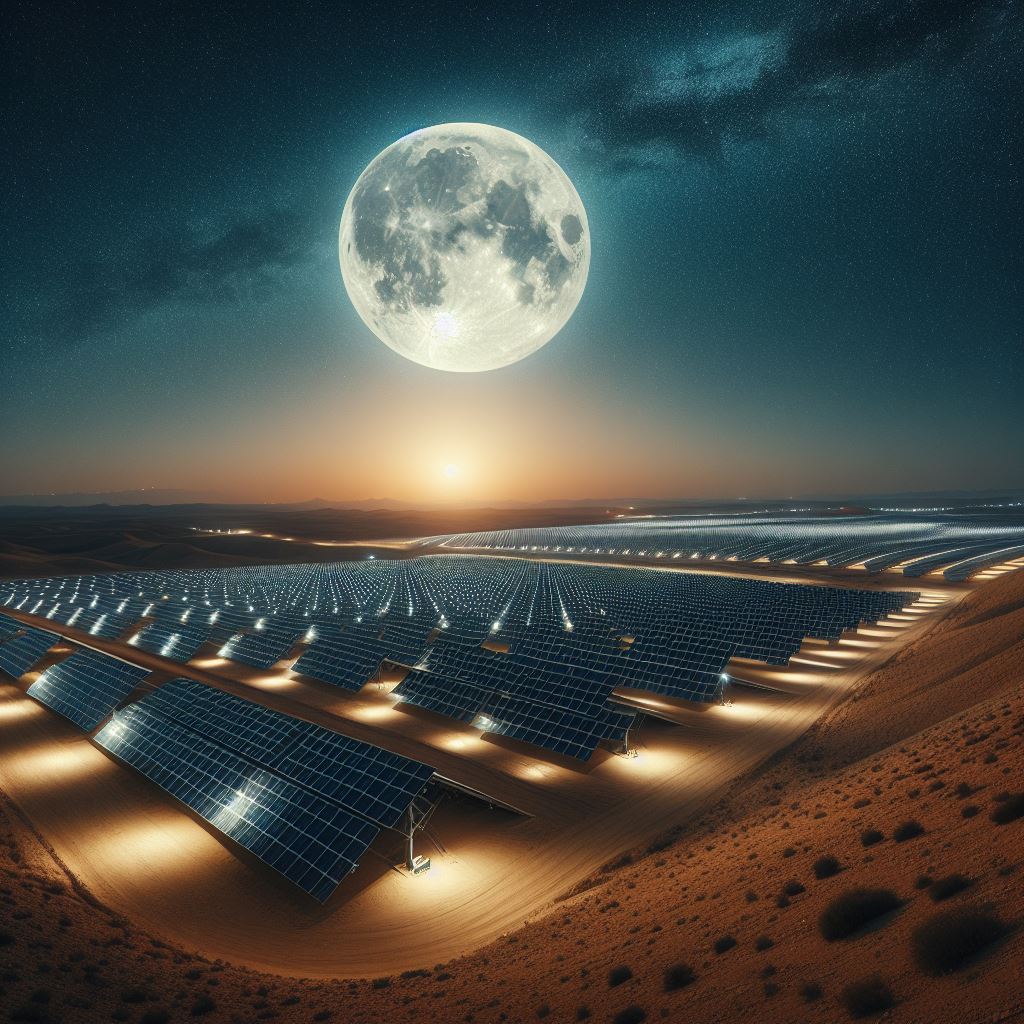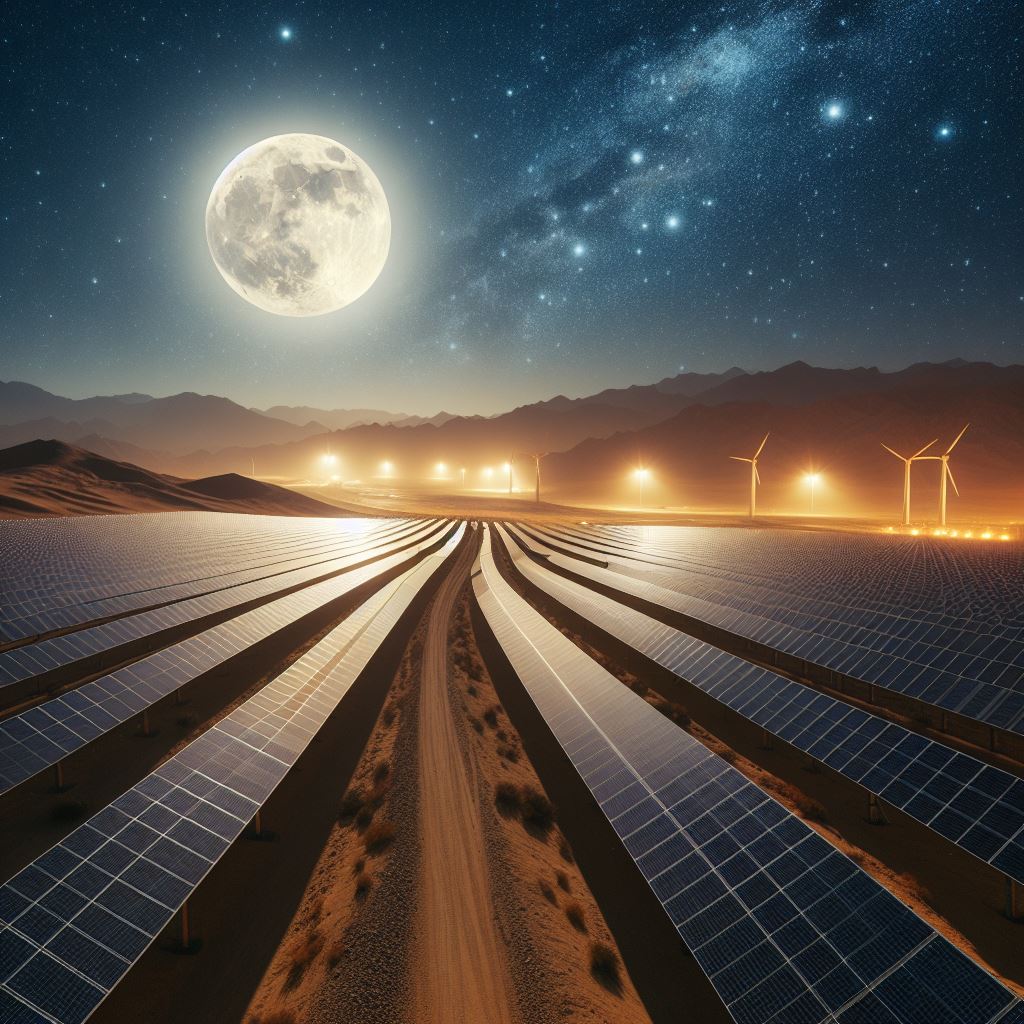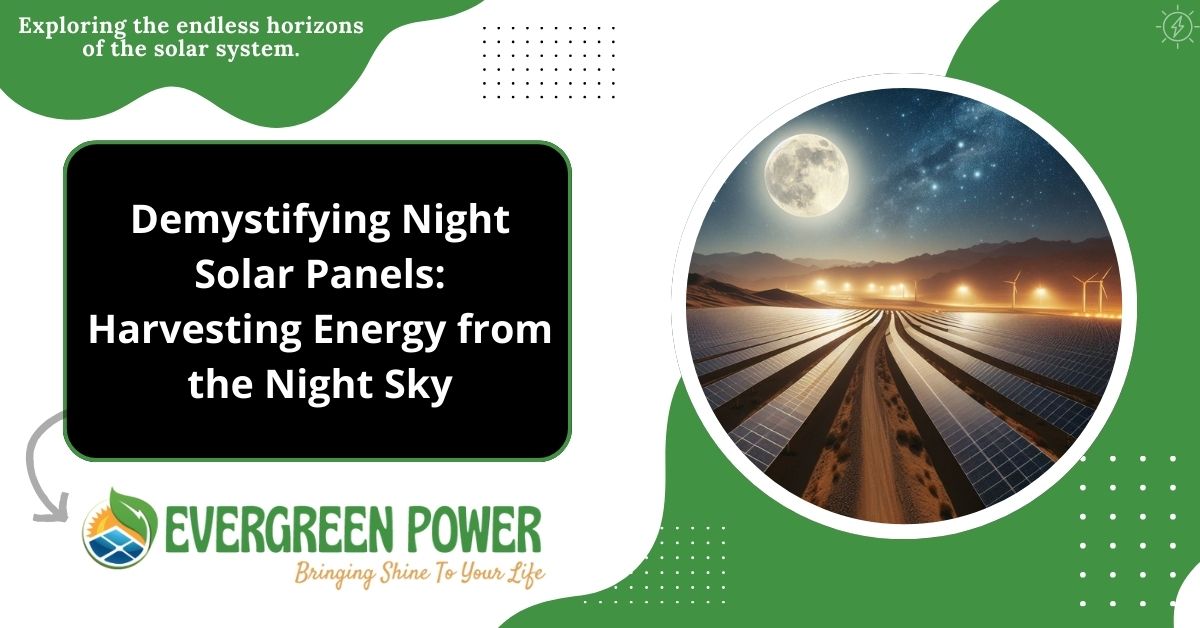Discover the wonders of Night Solar Panels in this comprehensive guide. From understanding their benefits to installation tips, and frequently asked questions, this article will shed light on everything you need to know.
Introduction:
The sun has long been touted as the king of renewable energy, powering solar panels that convert its rays into electricity. But what if we could tap into another celestial source to extend our renewable reach? Enter night solar panels, a captivating technology that harnesses the cool embrace of the night sky to generate electricity, pushing the boundaries of clean energy generation.

Beyond Sunlight: Understanding How Night Solar Panels Work
Unlike their daytime counterparts, Night Solar Panels don’t directly convert sunlight into electricity. Instead, they leverage a different principle: thermoelectric cooling. They exploit the temperature difference between the panel, cooled by radiating heat to the night sky, and its surroundings, generating electricity through the Seebeck effect.
Two main approaches power this nighttime energy harvesting:
1. Radiative Cooling:
- Special materials in the panel, akin to thermal radiators, efficiently emit infrared radiation (heat) toward the colder night sky.
- This creates a temperature difference between the panel and its surroundings, driving electricity generation through the Seebeck effect.
- Imagine the panel acting like a mini radiator, releasing heat into the vast coolness of space, and, in turn, producing electricity.
2. Upwelling cold air:
- The air underneath the panel naturally cools down at night, becoming denser and sinking.
- Fresh, cooler air flows in to replace it, creating a natural upwelling current.
- This flow passes through a mini-turbine within the panel, generating electricity via the wind turbine principle.
- Think of the panel as a miniature chimney, using the natural air circulation at night to turn its blades and produce electricity.
Emerging Technology: Current Stage and Challenges
Night solar technology is still in its nascent stages, with promising research prototypes yet to see widespread commercialization. Some key hurdles that need to be addressed include:
- Low Efficiency: Current prototypes convert only a small fraction of the temperature difference into electricity, making them significantly less efficient than conventional solar panels.
- High Cost: The materials and fabrication processes involved are currently expensive, hindering their affordability.
- Limited Generation Potential: Due to the smaller temperature difference at night compared to day, night solar panels are likely to produce less electricity overall.
The Dawning Promise: Potential Benefits and Applications
Despite these challenges, Night Solar Panels hold considerable promise for the future of renewable energy:
- 24/7 Energy Generation: They can potentially fill the gap in solar energy production during darkness, enabling continuous renewable energy generation.
- Off-Grid Solutions: They could be particularly valuable in remote areas with limited access to conventional power grids, offering a reliable and clean energy source.
- Complementing Conventional Solar: Combined with daytime solar panels, they could create a more resilient and reliable renewable energy system, maximizing energy harvesting throughout the day and night.
- Energy Efficiency: Night solar plates utilize solar energy, a renewable resource, to power LED lights, significantly reducing electricity bills and environmental impact.
- Environmentally Friendly: By harnessing solar power, night solar panels help reduce carbon emissions and dependence on non-renewable energy sources.
- Low Maintenance: Once installed, night solar plates require minimal maintenance, with no need for wiring or regular upkeep.
- Versatility: These plates come in various designs and sizes, suitable for illuminating pathways, gardens, driveways, and more.
- Enhanced Safety: Illuminating outdoor spaces with night solar plates enhances safety by providing visibility in dimly lit areas, reducing the risk of accidents and intrusions.
Beyond just dreams, here are some potential applications:
- Powering small electronics and sensors in remote locations: Imagine weather stations, agricultural sensors, and environmental monitoring devices functioning flawlessly throughout the night.
- Providing supplemental energy for homes and businesses: Existing solar installations could be boosted with night solar panels, increasing self-sufficiency and reducing reliance on the grid.
- Contributing to hybrid renewable energy systems: They could be integrated with other renewable sources like wind or hydro, creating robust and diverse microgrids for communities.
Installation Process:
Assessment and Planning: Begin by assessing the outdoor space where you intend to install the nighttime solar panels. Consider factors such as sunlight exposure, terrain, and desired lighting areas.
Placement: Choose strategic locations for installing the plates, ensuring they receive maximum sunlight exposure during the day.
Mounting: Follow the manufacturer’s instructions to securely mount the solar plates, typically on poles or walls, using appropriate fixtures.
Connection: Connect the solar plates to the LED lights according to the provided wiring diagram, ensuring proper insulation and waterproofing.
Testing and Adjustment: Test the lights to ensure they function correctly. Make any necessary adjustments to the angle or position of the solar plates for optimal performance.

FAQs about Night Solar Panels
How do night solar plates work?
Night solar plates contain photovoltaic cells that convert sunlight into electricity during the day. This energy is stored in a battery and used to power LED lights at night.
What factors affect the efficiency of Night Solar Panels?
Sunlight exposure, angle of installation, and proper maintenance are key factors that influence the efficiency of night solar plates.
Are nighttime solar panels suitable for all climates?
While night solar plates can function in various climates, they perform best in regions with ample sunlight. Extreme weather conditions may affect their performance.
Do nighttime solar panels require maintenance?
Night solar plates are relatively low maintenance. Periodic cleaning of the solar panels to remove dirt and debris ensures optimal performance.
Can nighttime solar panels be installed without professional help?
DIY installation is possible for those with experience, seeking professional assistance ensures proper placement and wiring, maximizing the efficiency and longevity of the system.
What is the lifespan of nighttime solar plates?
With proper maintenance, night solar plates can last up to 20-25 years, providing long-term illumination and energy savings.
Conclusion:
Night solar plates offer a sustainable and cost-effective solution for illuminating outdoor spaces while reducing reliance on traditional energy sources. By harnessing the power of the sun, these innovative devices provide efficient lighting while contributing to a greener future. Whether for residential or commercial use, embracing night solar plates can brighten nights while dimming environmental impact.

